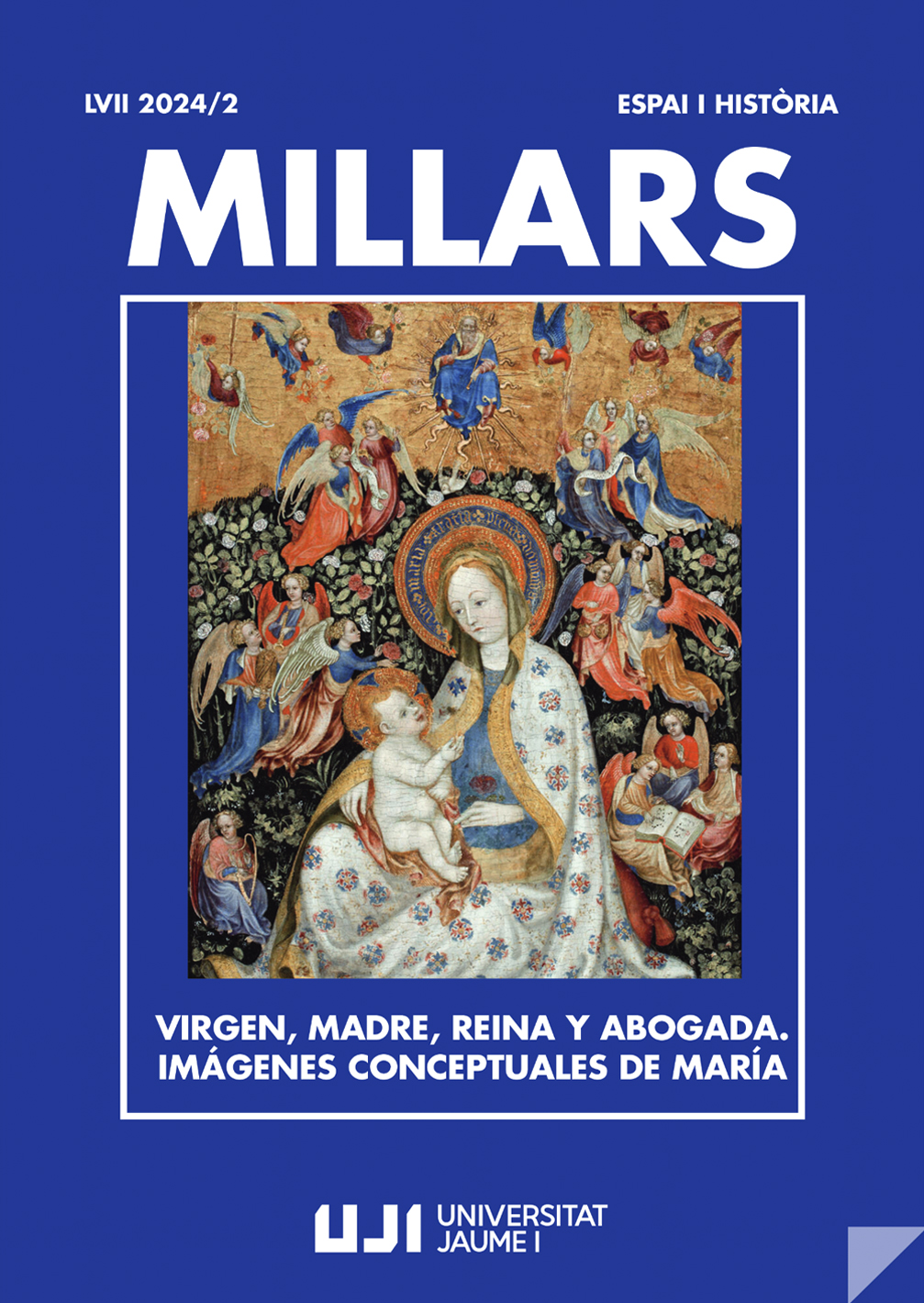San Lucas como pintor: retratista de la Virgen
##plugins.themes.bootstrap3.article.main##
Resum
San Lucas ha sido comúnmente representado acompañado del toro, siendo este su principal atributo identificativo. No obstante, las leyendas surgidas a raíz de los movimientos iconoclastas dotaron a san Lucas de la consideración de pintor, lo que se tradujo visualmente en su representación. A partir de estas premisas, el presente estudio tiene como objetivo explicar el origen del tipo iconográfico de san Lucas como pintor, relacionando las fuentes escritas con las visuales, así como delimitando el tipo respecto al de san Lucas retrata a María.
Descàrregues
##plugins.themes.bootstrap3.article.details##
Referències
ARANDA, Blanca (2019), Una pintura sobre lámina de cobre con la representación de una “Virgen Hodigitria”, Universidad Politécnica de Valencia, Facultad de Bellas Artes, Trabajo Final de Grado.
DURAND, Guillermo (1859), Rationale Divinorum Officiorum, Apud Jasephum Dura Bibliopolam, Nápoles.
BACCI, Michele (2000), “With the Paintbrush of the Evangelist Luke”, en M. Vasilake y M. Benake (eds.), Mother of God. Representations of the Virgin in Byzantine Art, Skira, Milán, 2000, pp. 79-89.
BACCI, Michele (1998), Il penello dell’Evangelista: storia delle immagini sacre attribuite a san Luca, GISEM: ETS, Pisa.
BELTING, Hans (2009), “Imágenes milagrosas de origen celestial y retratos terrenales. La imagen de san Lucas y el original ‘no pintado’ en Roma y en Oriente”, en Imagen y culto. Una historia de la imagen anterior a la edad del arte, Akal, Madrid, pp. 69-105.
BOECKL, Christine, M. (2005), “The Legend of St. Luke The Painter: Eastern and Western Iconography”, Wiener Jahrbuch für Kunstgeschichte, no. 54, pp. 7-37.
CARDUCHO, Vicente (1633), Diálogos de pintura, Francisco Martínez, Madrid.
CARMONA, Juan (2008), Iconografía de los santos, Akal, Madrid.
CORMACK, Robin (2007), “Icons in the Life of Bizantium”, Icon, Baltimore, Walters Art Gallery.
CUADRIELLO, Jaime (2001), “El obrador trinitario o María de Guadalupe creada en idea, imagen y materia”, en El divino pintor: la creación de María de Guadalupe en el taller celestial, Museo de la Basílica de Guadalupe, México, D.F., pp. 61-205.
DOBSCHÜTZ, Ernst von (1899), Christusbilder: Untersuchungen zur christlichen Legende, Leipzig.
ENRÍQUEZ GÓMEZ, Antonio [ZÁRATE, Fernando de] (1675), El médico pintor San Lucas.
EÖRSI, Anna (2003), “The incarnation of the word and of the form. Some thoughts about St Luke the painter, and about some painters of St Luke”, Acta Historiae Atrium, 44, pp. 47-57.
GONZÁLEZ, Pilar (2018), “San Lucas, pintor de la Virgen María y su repercusión iconográfica”, en PAZ AMÉRIGO, P. de y SANZ EXTREMEÑO, I. (coord.), Eulogía. Estudios sobre cristianismo primitivo: homenaje a Mercedes López Salvá, Escolar y Mayo, Madrid, pp. 311-326.
HALL, Linda B. (2004), Mary, Mother and Warriour: The Virgin in Spain and the Americas, University of Texas Press, Austin.
Howard-Johnston, J., Byzantium in the Iconoclast Era (ca 680-850): The Sources, Oxford Universitv Press, 2003.
OLDS, Clifton (1990), “Jan Gossaert’s ‘St. Luke Painting the Virgin’: A Renaissance Artist’s Cultural Literacy”, The Journal of Aesthetic Education, vol. 24, no. 1, pp. 89-96.
RAYNOR, Rebecca (2015), “The shaping of an icon: St Luke, the artist”, Byzantine and Modern Greek Studies, vol. 39, no. 2, pp. 161-172.
RÉAU, Louis (2000), Iconografía del arte cristiano, Serbal, Barcelona, vol. 5.
VELDMAN, Ilja M. (1974), “Maarten van Heemskerck and St. Luke’s Medical Books”, Similous: Netherlands Quanterly for the History of Art, vol. 7, no.2, pp. 91-100.
VERSTEGEN, Ian (2008), “Between Presence and perspective the Portrait-in-a-Picture in Early Modern Painting”, Zeitschrift für Kunstgeschichte, no. 71 pp. 513-519.
VORÁGINE, Santiago de la (1999), La leyenda dorada 1, Alianza Forma, Madrid.


